
This page created 5 October 2014, and last modified: 7 February 2015 (bottom four illustrations added)

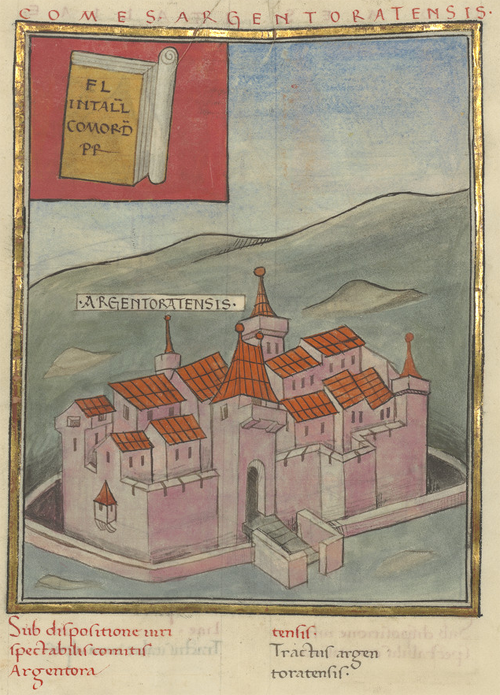
|
The Notitia has a section for a "Comes Argentoratensis", as can be seen from the illustration shown to the left, and taken from the Parisian manuscript (P); it comes immediately after the illustration entitled Comes Italiae. However, like that of the Comes Italiae, the section of the Comes Argentoratensis is devoid of any troops, officers or towns - the illustration to the left shows the entire section; there is no more text accompanying it other than that shown immediately beneath the frame, describing the Counts command as being the "Tractus Argentoratensis" (the region around modern Alsace). Presumably the command was made defunct at some point after the Notitia was first drawn up but before (or with) its final revision. Unlike the Comes Italiae, the Comes Argentoratensis is not even listed in the section of the Notitia listing the high officials of the west (section 95/6 in Ingo Maier's numbering scheme; the Comes Italiae is listed at 95/6.31).
Whether the command was established before the 406/7 trans-Rhine invasions, and disbanded in the aftermath, or established in the aftermath, only to be disbanded even later, is unknown. If the former, the command is likely to have included the garrison of Argentoratum (Strasbourg), which for most of the 4th century was Legio VIII Augusta Pia Fedelis Constans; however, judging by an inscription (CIL 13.11538) dating to 371 AD mentioning (at least part of) the legion being at Etzgen in northern Switzerland it had apparently been partially or entirely moved away from Strasbourg; in the Notitia the unit appears as the Octavani, in the Magister Peditum's Italian command. If the command was only set up in the 5th century, to be disbanded within a few years, even a most tentative listing of troops is likely impossible. The shield pattern of the Octavani as shown in various manuscripts is as below:

That under O comes from the Bodleian manuscript in Oxford, that under P from the Paris manuscript, that under M from the first portion of the Munich manuscript, that under W from the second portion of the Munich manuscript, and that under B from the Froben edition. This is unlikely to have been a pattern born by the unit while still headquartered at Strasbourg, however, as units transferred to a field army from a garrison station seem to have been given new shield patterns.
|
Below are the corresponding sections from the Bodelian manuscript, O; and the Froben printed edition, B:
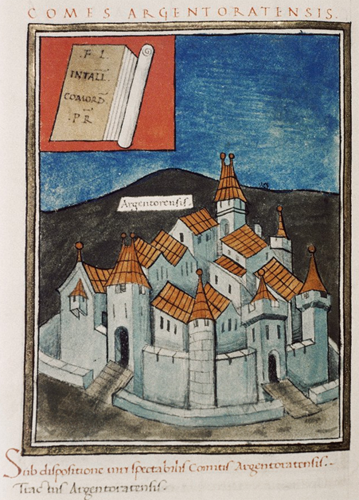
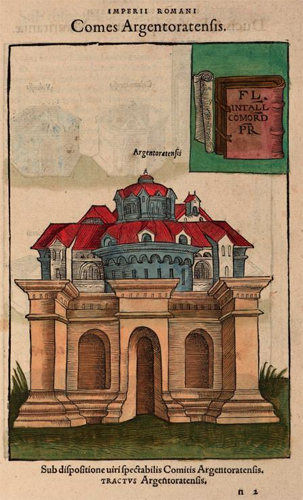
And below are shown the section from the first portion the Munich manuscript, M; and the illustration from the second set of pictures, W.
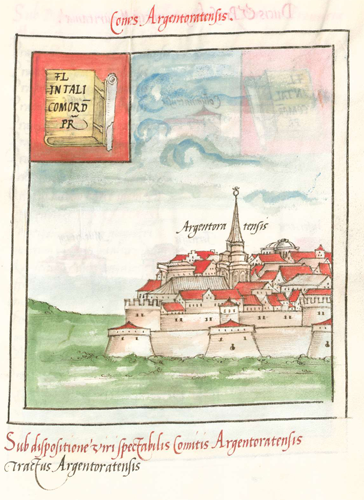
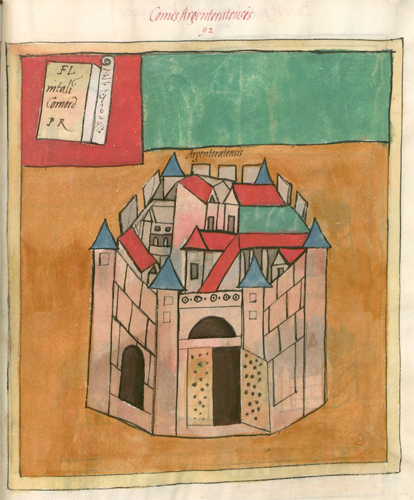

Return to the Notitia index page.